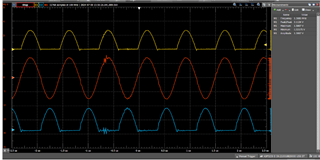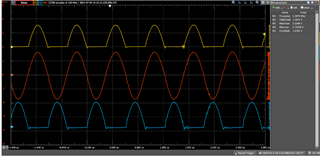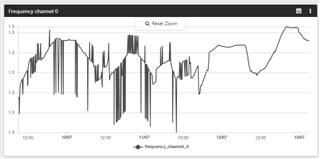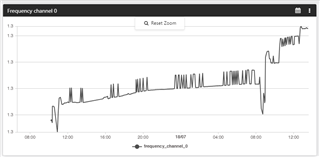Tool/software:
Justin Beigel this is a followup for the following thread: https://e2e.ti.com/support/sensors-group/sensors/f/sensors-forum/1365269/ldc1614-strange-oscillations-measured-over-time/5213480
- Could you measure the sensor waveforms on an oscilloscope while they are having the noisy behavior? By taking a differential across the INxA and INxB pins, you should see a clean sinusoidal wave. Additionally, you can double check the amplitude of the wave is between 1.2V and 1.8V during the noisy behavior.
I took oscilloscope measurements of the signal amplitude, and I can see that the amplitude changes between measurements, and that they match with the measured frequency. The current drive code is constant at 19. We are turning the LDC1614 on and off with a mosfet between measurements. The oscilloscope measurements are attached to this post. There is no target in front of the antenna and its environment only slightly changes due to small temperature differences.
- Do you know what the Q factor of your LC tank on each sensor channel is?
The Q factor is 143.
- You mention the frequency shift due to temperature change causes a difference in the measurement noise. Does this also occur if you alter the frequency through a normal target interaction while maintaining a stable temperature?
When maintaining a stable temperature we can see that the measurement noise is stable as shown in the attached photo.
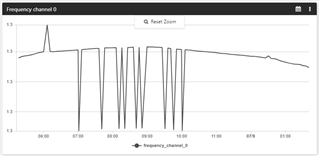
Thanks!



